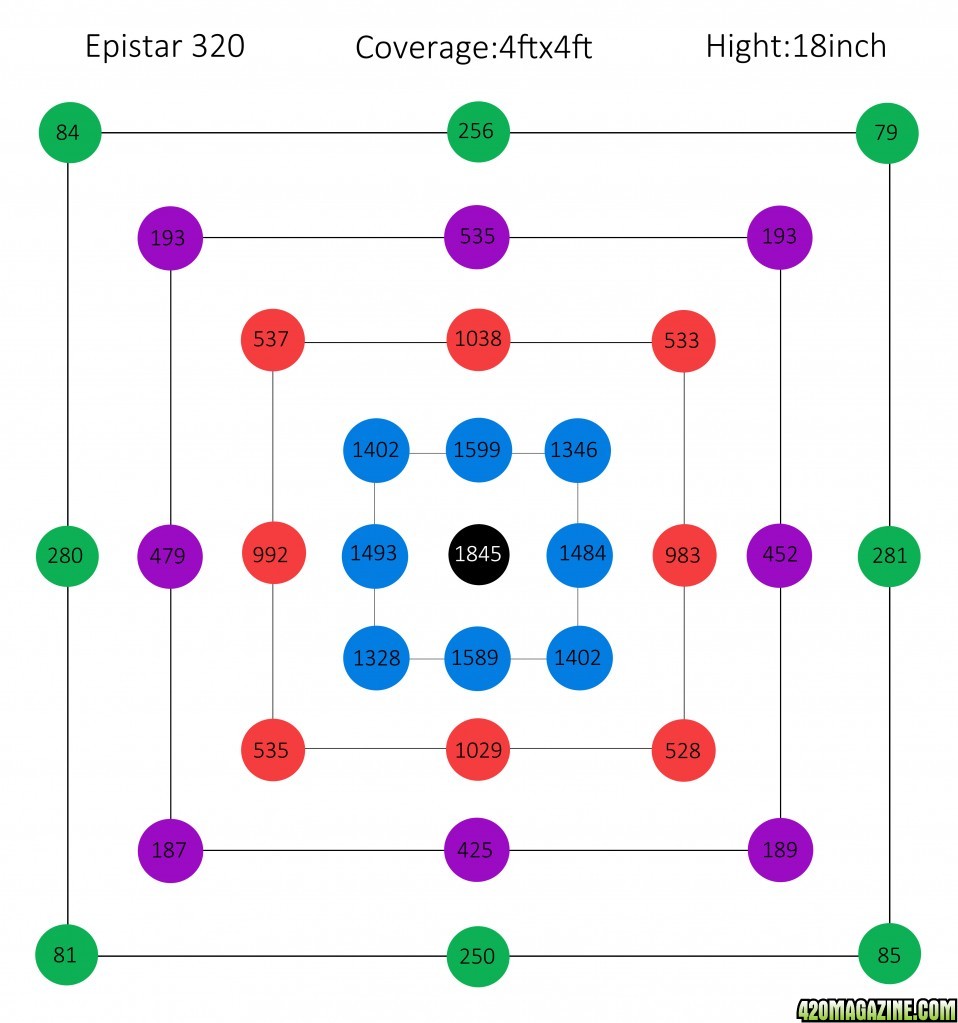ConstantGreen
New Member
Hello, I took data on the two LED panels I have in efforts to compare them with each other and determine their optimal height and coverage. Both panels are marketed for a 4x4 area, so I measured them in that space. Panels were centered and leveled at each height.
First is Amare's Solar Eclipse 450. 21.5" sq. Pulls 435 watts (15w UVB is out of PAR range). Has 60x 5w Monochrome LED's and 6x Cree 3070 CoB's. I'll also be testing with the optional focusing lenses on.

Second is the Mars II 1200. 19" sq. Pulls 550w. Has 256x 5w Monochrome LED's. On my panel during the test, three green LED's were completely dead and four blue LED's had burnt-black lenses. So my data for the 1200 is at least 2-3% lower than a fully-operational unit.

PPFD readings were taken in a 4x4' tent by my Hydrofarm Quantum PAR meter. I divided the 4x4 into 6" squares and took readings at the center of each square. Readings were taken 6" apart in height as well. After taking over 700 readings I ended up with this chart:
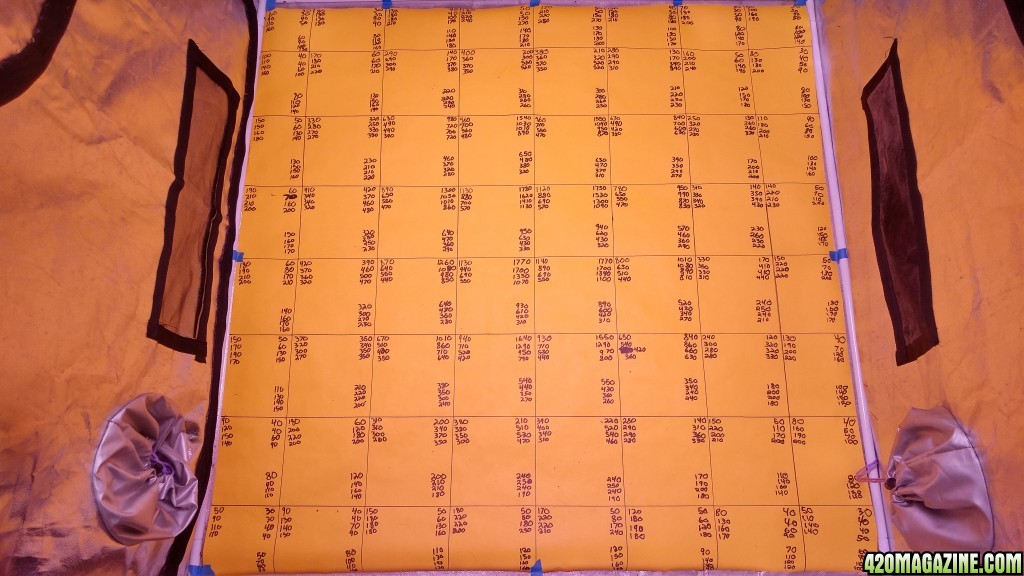
(Download the image if you want to zoom to readable size)
The chart just shows the raw data, but here's the format I was recording each square in:
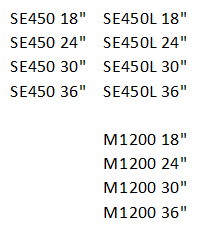
To further organize the data, I thought it would be efficient to find the average PPFD of each light at each height.
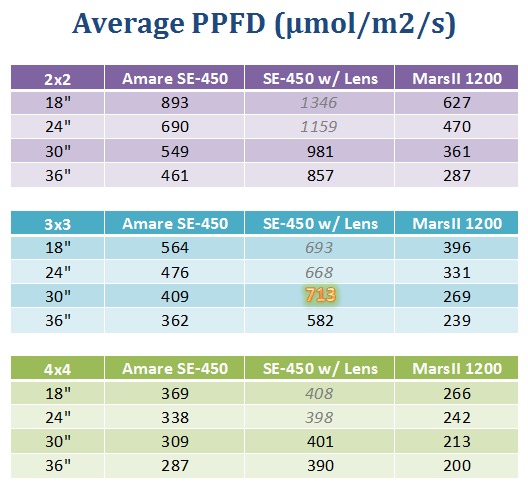
From here I can see a few things.
Clearly the Amare SE450 is better than the Mars II 1200, while using 100w less power. This surprised me because I have yet to see these results in my yields.
SE450 always averages better with lenses on, as long as you can keep it 30-36" high. Lenses will burn cannabis if used lower than 30".
The CoB's create spotlight, especially with lenses on. Seems to be a sweet spot in the 3x3' zone at 30".
Looking at the raw data graph, the numbers along the perimeter that signify the 4x4 range are so low that I still can't understand why the manufacturers have marketed these panels for 4x4 spaces.
I don't think there's a researched consensus on how much PAR is optimal for growing and flowering cannabis, but the few quotes I did find were recommending 700 PPFD for vegging and 800 PPFD for flowering, others suggested 800-1200 PPFD or even up to 1500. It's important to remember that PAR is not everything; CO2, temperature, and day-length also factor into optimal growth. If we accept 700 as the minimum optimal PPFD, then both of these panels belong in 2x2 spaces. That doesn't seem right though, because for example the SE450 in a 2x2 space would be 112w per sq. ft. and I doubt how easily you could yield 450g (1 GPW) in a 2x2.
Anyway, just wanted to share what I have so far. Hoping to further analyze the data and create easier comparisons across LED's. Please feel free to ask questions / share thoughts.
First is Amare's Solar Eclipse 450. 21.5" sq. Pulls 435 watts (15w UVB is out of PAR range). Has 60x 5w Monochrome LED's and 6x Cree 3070 CoB's. I'll also be testing with the optional focusing lenses on.

Second is the Mars II 1200. 19" sq. Pulls 550w. Has 256x 5w Monochrome LED's. On my panel during the test, three green LED's were completely dead and four blue LED's had burnt-black lenses. So my data for the 1200 is at least 2-3% lower than a fully-operational unit.

PPFD readings were taken in a 4x4' tent by my Hydrofarm Quantum PAR meter. I divided the 4x4 into 6" squares and took readings at the center of each square. Readings were taken 6" apart in height as well. After taking over 700 readings I ended up with this chart:

(Download the image if you want to zoom to readable size)
The chart just shows the raw data, but here's the format I was recording each square in:

To further organize the data, I thought it would be efficient to find the average PPFD of each light at each height.

From here I can see a few things.
Clearly the Amare SE450 is better than the Mars II 1200, while using 100w less power. This surprised me because I have yet to see these results in my yields.
SE450 always averages better with lenses on, as long as you can keep it 30-36" high. Lenses will burn cannabis if used lower than 30".
The CoB's create spotlight, especially with lenses on. Seems to be a sweet spot in the 3x3' zone at 30".
Looking at the raw data graph, the numbers along the perimeter that signify the 4x4 range are so low that I still can't understand why the manufacturers have marketed these panels for 4x4 spaces.
I don't think there's a researched consensus on how much PAR is optimal for growing and flowering cannabis, but the few quotes I did find were recommending 700 PPFD for vegging and 800 PPFD for flowering, others suggested 800-1200 PPFD or even up to 1500. It's important to remember that PAR is not everything; CO2, temperature, and day-length also factor into optimal growth. If we accept 700 as the minimum optimal PPFD, then both of these panels belong in 2x2 spaces. That doesn't seem right though, because for example the SE450 in a 2x2 space would be 112w per sq. ft. and I doubt how easily you could yield 450g (1 GPW) in a 2x2.
Anyway, just wanted to share what I have so far. Hoping to further analyze the data and create easier comparisons across LED's. Please feel free to ask questions / share thoughts.




 Thanks Icemud! I really appreciate all the research you do, especially recently on the very interesting emerson effect! I admittedly haven't been keeping up, but I'm saving it for a rainy day.
Thanks Icemud! I really appreciate all the research you do, especially recently on the very interesting emerson effect! I admittedly haven't been keeping up, but I'm saving it for a rainy day. Hi Versai, there is light loss. We haven't test the PAR depreciation for our light. We have tested the light depreciation. Within 1000 hours, the light depreciation is 0%. It will be 1% after 3000 hours and 3% after 10000 hours."
Hi Versai, there is light loss. We haven't test the PAR depreciation for our light. We have tested the light depreciation. Within 1000 hours, the light depreciation is 0%. It will be 1% after 3000 hours and 3% after 10000 hours."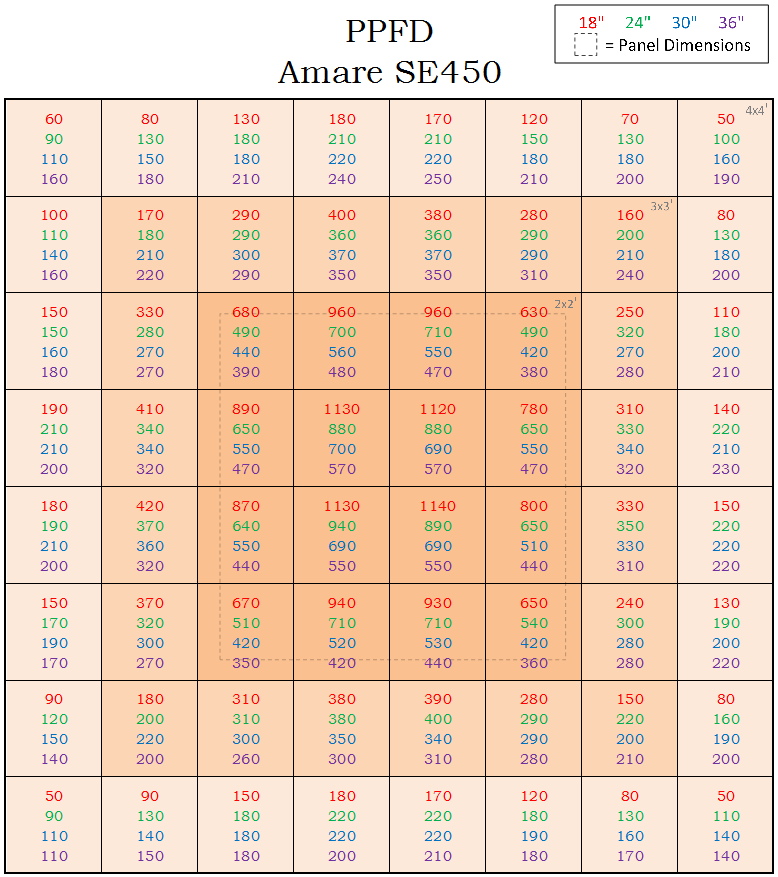
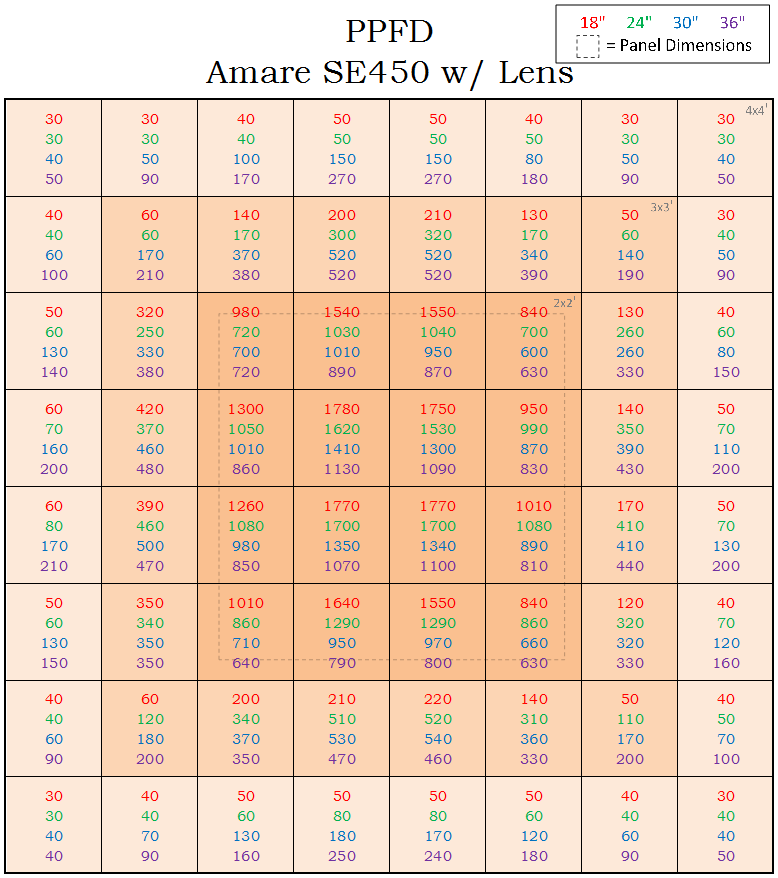
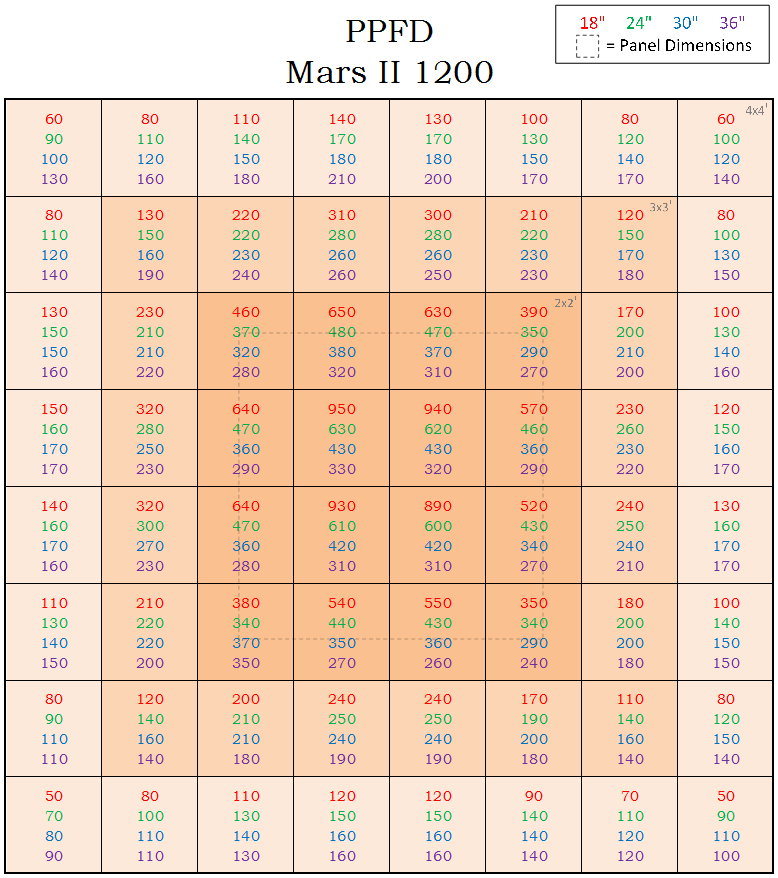
 hint hint manufactures! lol
hint hint manufactures! lol


